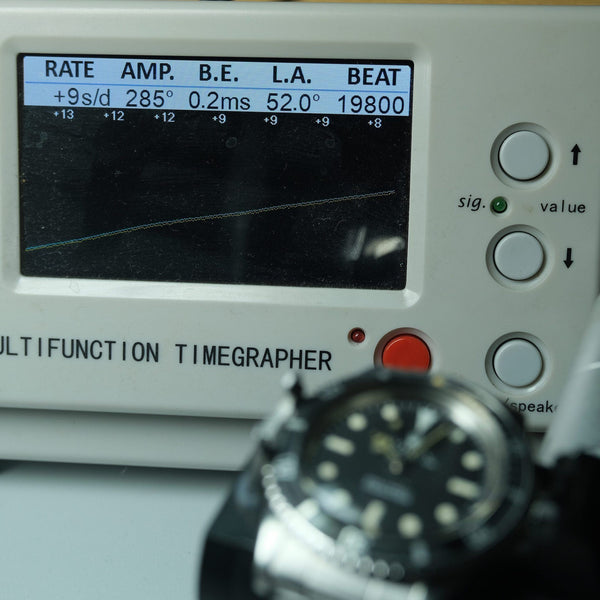
Keeping track of your lab results lets your doctor take action as soon as your blood counts change to help prevent many cancer-related problems and cancer treatment side effects. They can show small changes before problems get serious. These tests are done to help watch your body’s response to treatment. Our humble blog focuses on adjusting rather than general-purpose watchmaking, so I encourage you to view the videos below-by the ever-capable and informative Christian and Mark-for the nuts-and-bolts of using and reading a Timegrapher.When you have cancer, you will probably need lab, imaging, or other tests.
UNDERSTANDING WATCH TIMEGRAPHER RESULTS FREE
And some options are free and open-source, although there’s some art and expense in finding and connecting the right kind of microphone.
UNDERSTANDING WATCH TIMEGRAPHER RESULTS UPGRADE
The virtue of this approach is that you can upgrade your software without replacing a whole unit. These range from simple smartphone apps that tell only the rate to full-featured timing programs that run on a PC. The watch forums buzz with updates on the latest software options. Timing software, in contrast, gets installed on your computer and reads the ticks from a microphone.

Machines, like the Witschi and Timegrapher, have integrated displays and work right out of the box-turn them on, put the watch on the microphone, and get to it. Your first decision is probably between a timing machine versus timing software.

Others have compared expensive Witschi machines to inexpensive smartphone apps and open-source programs and found similarly strong agreement. In his video description, Christian at the Watch Guy points out that his Timegrapher and Witschi give identical readings. The modern timing machines have pretty displays and neat functions, but underneath they are merely doing what the Watchmaster machines and Greiner Vibrograf machines from the 1940s and 1950s did. It’s important to step back and realize that a timing machine isn’t performing rocket surgery: it is detecting sounds, measuring intervals between them, and doing some simple math. The expensive options are a poor value for the hobbyist and collector. Like everything else, timing machines span the price range from startling to free, from the high-end Witschi machines found in commercial shops to the humble Made-in-China Timegrapher to free open-source software. We’ll see many of these throughout this blog and describe them as they come up. Many problems-from rubbing hairsprings to knocking to problems in the gear train-reveal themselves in particular patterns of timing traces. When a watch runs well, it leaves two clean, parallel traces as it ticks merrily along. Without a timing machine, this is tedious and complicated. And we also need to read the rates at low amplitudes so we can find poise errors. We’ve talked about how we need an amplitude of at least 270 degrees in the horizontal positions and 220 degrees in the vertical positions.

If you don’t have a timing machine, you really need one. Collectors of vintage watches tend to be fans of the old days and the old ways, but we’ll always take time-saving inventions when we can find them.


 0 kommentar(er)
0 kommentar(er)
